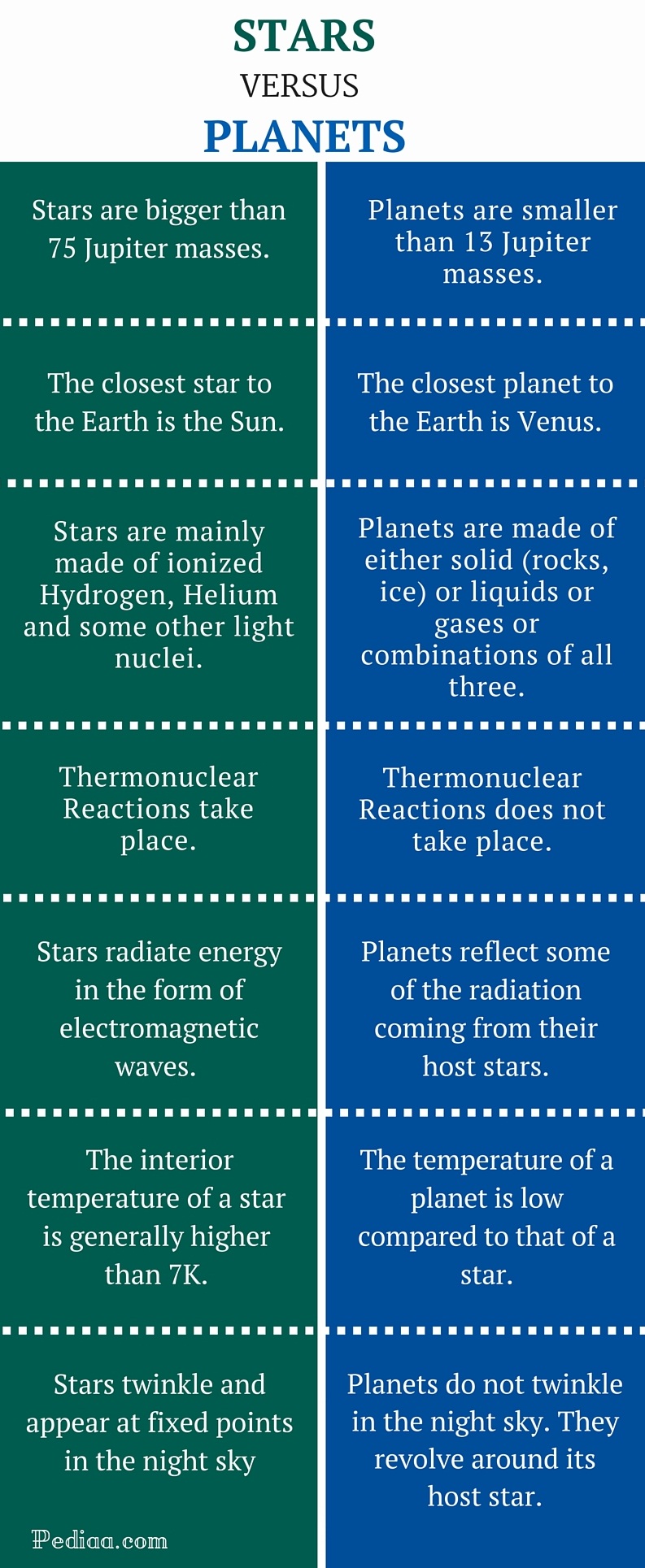
Difference Between Stars and
One big difference between stars and planets comes from how they form. Stars are formed from huge clouds of gas and dust called nebulae. Over time, matter in a nebula will begin to coalesce under the force of its own gravity, forming clumps that grow larger and larger. This growing ball of matter will become hotter as gravity compresses it with.
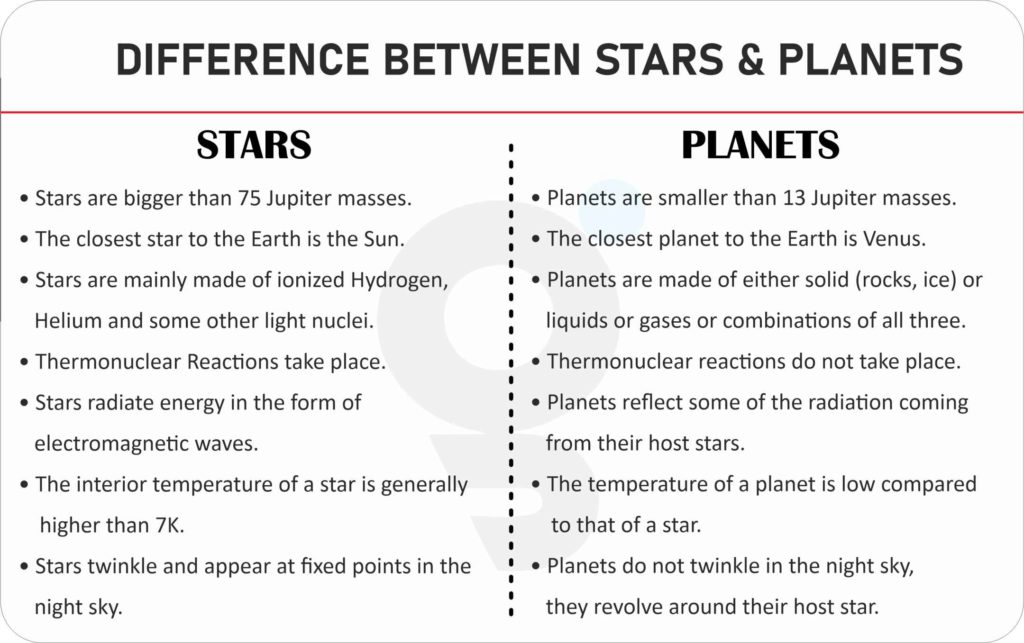
What is Difference between Stars and
1 Check if the object twinkles. One of the easiest ways to distinguish between stars and planets in the night sky is by looking to see if the object twinkles or shimmers. This can usually be detected with the naked eye if you have a clear view of the sky and if you watch the sky for long enough. [1]

How to Tell the Difference Between and Stars 12 Steps
Star A star is a celestial body having its own light and energy. A star is a huge glittering ball of hot gas, mainly consisting of Hydrogen and Helium. Stars are giant, luminous spheres of plasma collapsed together by gravity. Stars are responsible for the manufacture of heavy elements like Carbon, Nitrogen, and Oxygen.
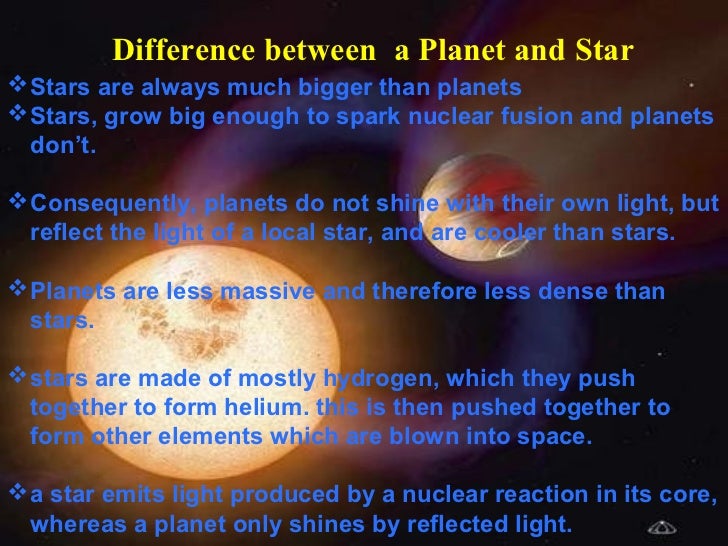
The Solar System by Diana Meneses (I Made)
Jared shows us the difference between stars and planets. Visit our channel for over 300 videos that explain science! Please subscribe.https://www.youtube.com.

vs Stars FlatEarth.ws
Audience: 3rd grade and older This slide shows the difference in temperature between planets orbiting an M Dwarf star and our Sun. The second view shows their relative distance from their star.. can capture the elusive spectra of hot-Jupiter planets by comparing observations including light from both the star and planet to those containing.
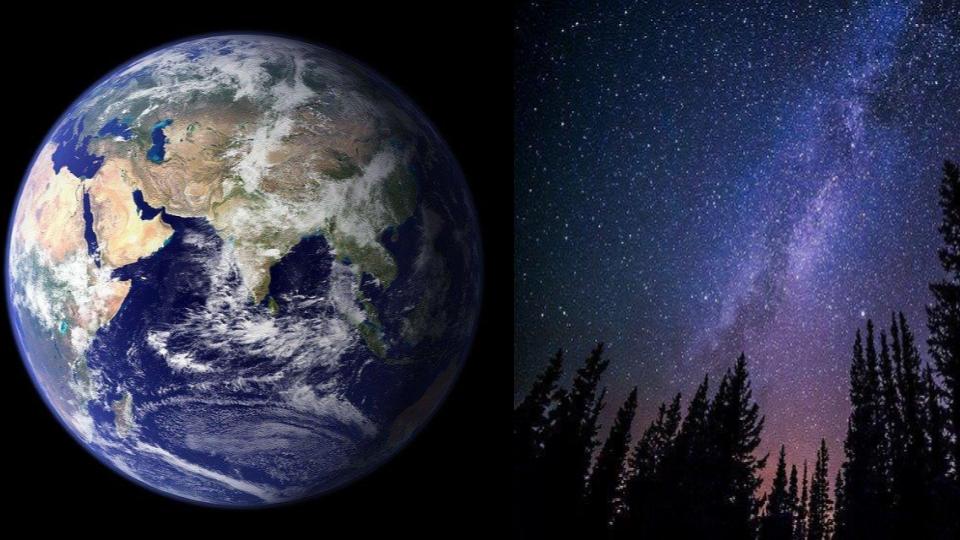
10 Differences between stars and DewWool
What are the differences between a star and a planet? Last Updated: February 6, 2023 Our universe is host to billions of celestial bodies. From various types of galaxies and meteors to planets and stars, observing them can help us develop our understanding of the universe. However, they can often be difficult to distinguish from Earth.
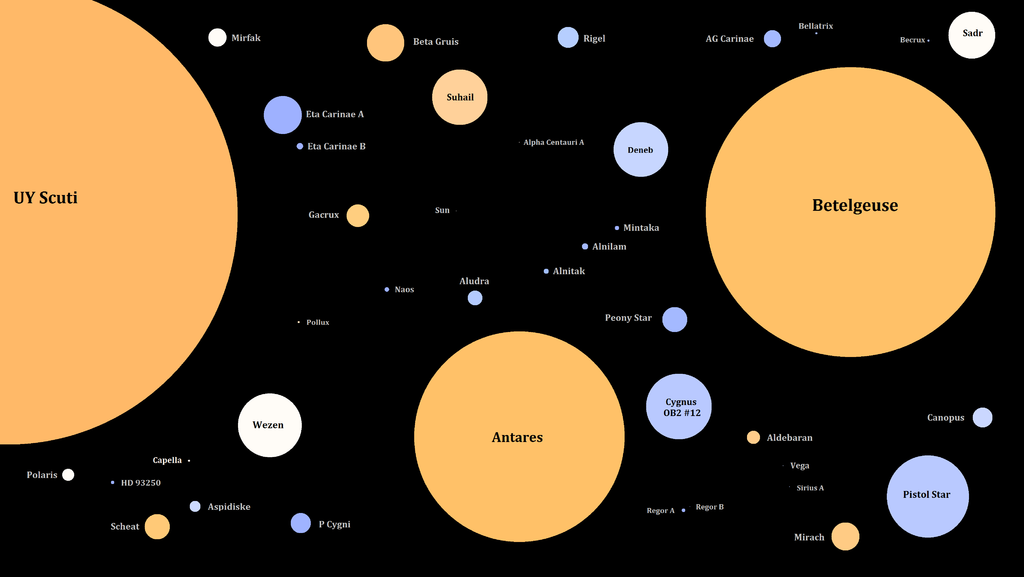
Difference Between Stars and
What is the primary difference between stars and planets? Can a planet become a star? Difference between stars and planets 1. Origin 2. Composition 3. Orbit 4. Lifespan 5. Diameter 6. Mass 7. Atmosphere 8.

Size of and stars. Amazing comparison YouTube
More Information on Planets One major difference between Sun and planet is that planet is incredibly smaller in size. Furthermore, a fundamental characteristic of a planet is that it must revolve around a star, which in our solar system is the Sun.

Solar System Formation Difference Between Star and YouTube
The difference Between Star and Planet is that a star is a luminous celestial body that generates energy through nuclear fusion in its core, while a planet is a non-luminous celestial body that orbits a star and does not generate energy through nuclear fusion.

Solar system and galaxies Royalty Free Vector Image
- WorldAtlas What Is The Difference Between A Star And A Planet? Planets and stars are two very different objects. At first glance, there are obvious differences between them. Planets are small and dim, while stars are massive and bright. What makes a planet a planet and a star a star? Do stars begin as planets? Can a planet become a star?

How to Tell the Difference Between and Stars
Start Quiz The key difference between stars and planets in tabular form is given here. Learn the detailed comparison between stars and planets by registering with BYJU'S
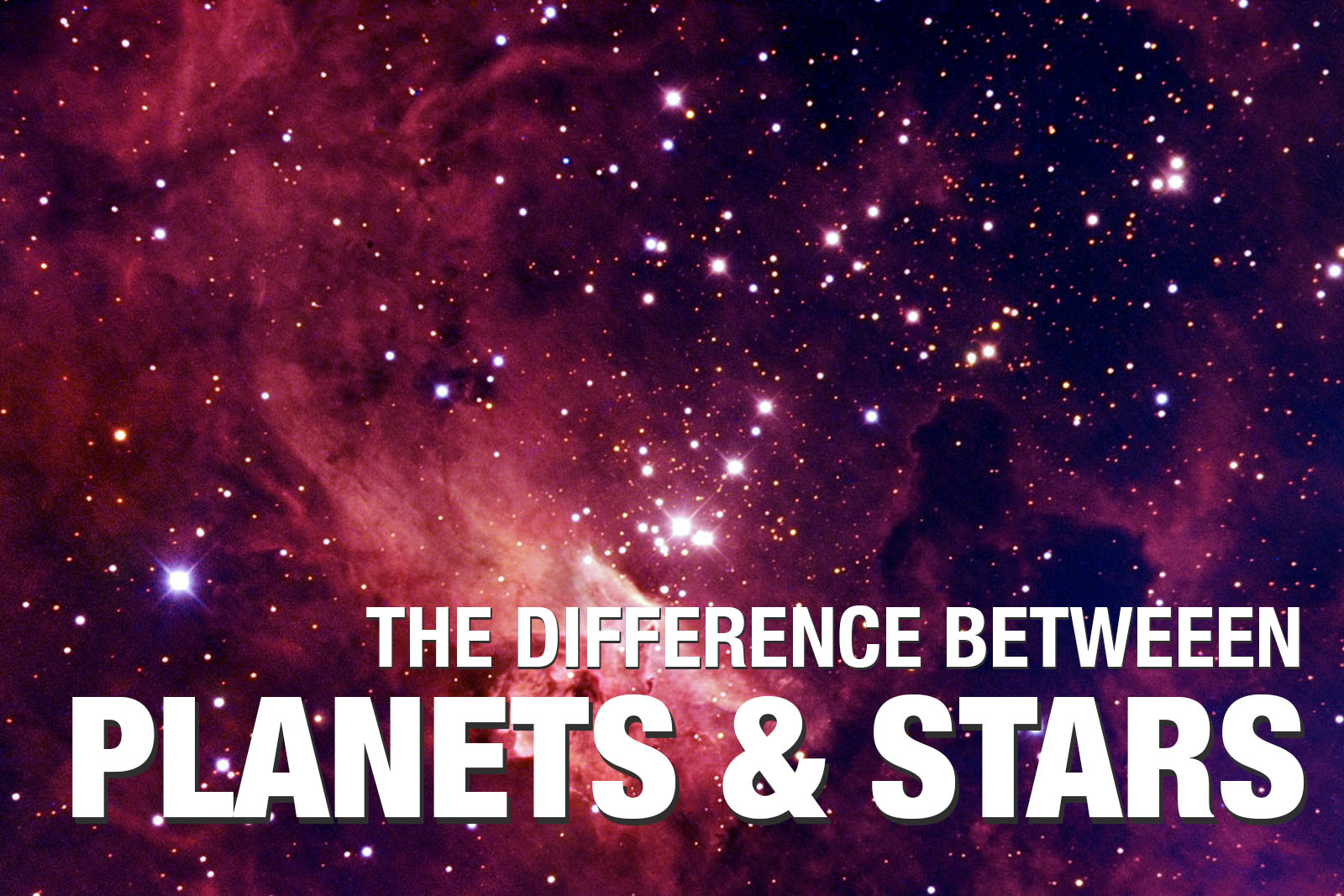
The difference between and stars Little Astronomy
Key difference: Stars and planets are two different types of astronomical objects existing in our universe. A planet is a large object that orbits around a star or a stellar remnant and has an atmosphere. A star, on the other hand, is a massive, luminous sphere of plasma that is held together by its gravitational pull.
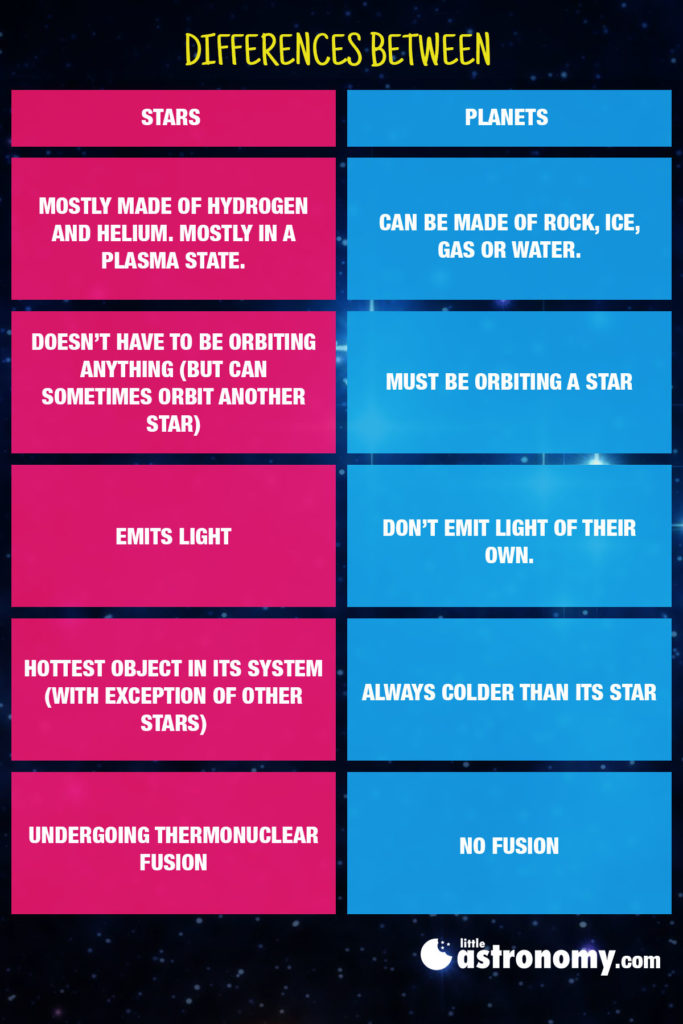
The difference between and stars Little Astronomy
Definition Key Differences Conclusion Comparison Chart Definition of Stars Stars can be understood as the glowing ball, consisting of plasma, clasped together by its gravity. Plasma is an intensely-heated state of matter. Stars are made up of gasses like hydrogen, helium and similar other light elements.

Comparing stars and
Here are some of the main differences between stars and planets: Definition: A star is a celestial object that generates energy through nuclear fusion, while a planet is a celestial body that orbits a star and does not generate energy. Size and Mass: Stars are much larger and more massive than planets. The smallest stars are still larger than.
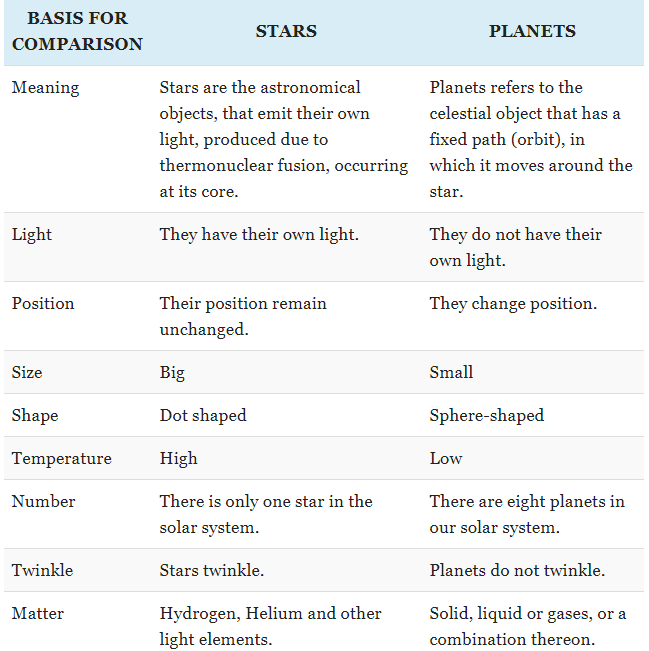
Revision Notes Class 8 Chapter 17 Stars and the Solar System
1. Planets do not twinkle in the sky. 2. They have no light. 3. They revolve around the sun. 4. Planets are small as compared to star. Stars 1. Stars twinkle in the sky. 2. They have their own light. 3. They are fixed at a point. 4. They are very big in size. Tags Stars and Planets Stars vs Planets Show more Previous Post Next Post
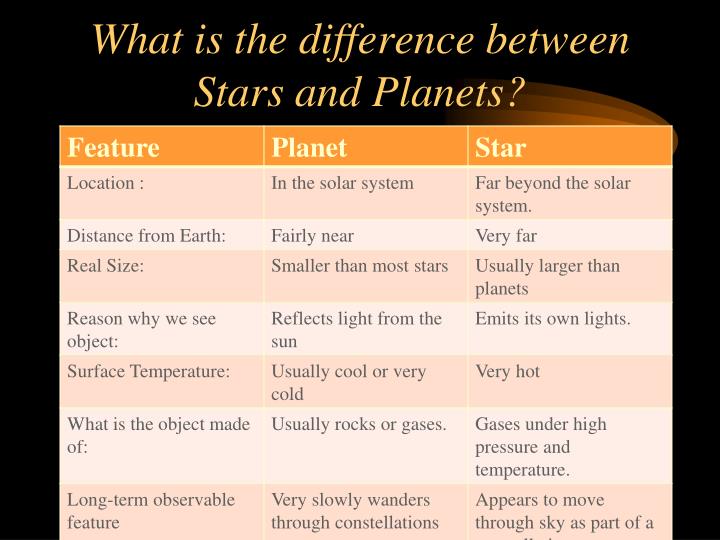
PPT Grade Nine Science PowerPoint Presentation ID4250937
The planets revolving around a star other than our sun, are called exoplanets or extrasolar planets. Many exoplanets have been found in recent past. Difference Between Stars and Planets Size: Stars: Stars are bigger than 75 Jupiter masses. Planets: Planets are smaller than 13 Jupiter masses. The Closest Star/Planet to the Earth: